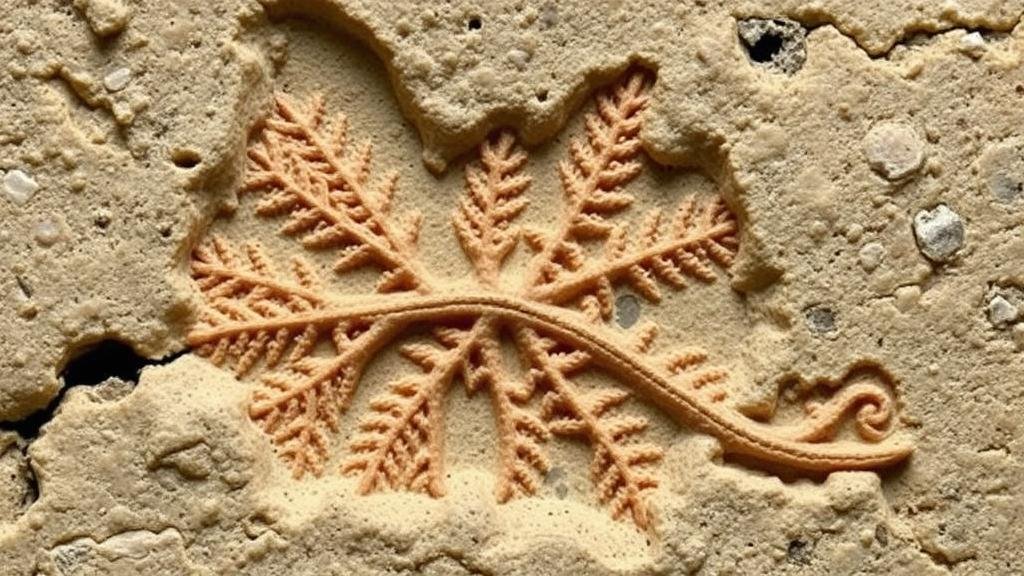Discovering fossilized sea lilies in the Paleozoic limestone of Germany’s Franconian Jura.
Discovering Fossilized Sea Lilies in the Paleozoic Limestone of Germany’s Franconian Jura
The Franconian Jura, a stunning region in Bavaria, Germany, is renowned not only for its picturesque landscapes but also for its significant geological heritage. Among its most fascinating finds are the fossilized sea lilies, or crinoids, which have intrigued rockhounds and mineral collectors alike. This article delves into the characteristics of these ancient creatures, their fossilization process, and practical tips for collectors seeking their treasures within the Paleozoic limestone deposits of this remarkable area.
Understanding Sea Lilies and Their Habitat
Sea lilies, belonging to the class Crinoidea, are marine animals that flourished from the Cambrian period and thrived in the oceans during the Paleozoic era. Unlike modern lilies, sea lilies are echinoderms, related to starfish and sea urchins. These organisms were anchored to the seafloor by stalk-like structures, allowing them to filter plankton and organic matter from the water.
During the Paleozoic era, particularly in the Devonian and Carboniferous periods, the area that is now the Franconian Jura was covered by a warm, shallow sea, providing an ideal environment for these creatures to flourish. The limestone formations, primarily composed of calcite, were formed from the accumulation of marine organisms’ shells, including crinoids, creating extensive coral reefs.
The Fossilization Process of Sea Lilies
The fossilization of sea lilies occurs through a process known as sedimentation, wherein sediments gradually cover the organisms after death. Over millions of years, these layers compact and solidify into limestone, preserving the intricate details of the crinoids.
Key factors that contribute to the fossilization of sea lilies include:
- Rapid burial: Quick accumulation of sediments helps protect the remains from decay and scavengers.
- Calcium saturation: The calcium-rich environment aids in the preservation of delicate structures.
- Low-energy environments: Calm waters allow for the deposition of fine sediments, enhancing fossil details.
Significance of the Franconian Jura’s Sea Lily Fossils
Fossilized sea lilies found in the Franconian Jura offer substantial scientific insights. Not only do they serve as a record of ancient marine ecosystems, but they also provide crucial information about Paleozoic environmental conditions. For example, the presence of different crinoid species can indicate variations in salinity, temperature, and sea level during the time of their existence.
Also, crinoid fossils are valuable tools for stratigraphic correlation, helping geologists to date rock layers and understand the geological history of the region. A notable example is the crinoids from the Muschelkalk and the Stubensandstein formations, providing a timeline spanning over 250 million years.
Where to Find Fossilized Sea Lilies in the Franconian Jura
Rockhounds and collectors will find that the Franconian Jura presents several locations renowned for fossil hunting:
- Römerstein: This area is known for its rich deposits of limestone, where crinoid fossils can be easily spotted.
- Solnhofen: Famous for its fossilized remains of various organisms, it’s also rich in crinoids.
- Burgbernheim: An ideal site for collectors to discover both whole and fragmented crinoid specimens.
Practical Tips for Collectors
For those aspiring to add fossilized sea lilies to their collection, here are some actionable tips:
- Research: Prior knowledge about the geological layers in the area can significantly enhance your chances of success. Familiarize yourself with crinoid types and their specific limestone markers.
- Tools: Equip yourself with a sturdy rock hammer, chisel, safety goggles, and a brush for cleaning your finds.
- Face the elements: Wear appropriate clothing and footwear suitable for outdoor excursions, as some sites may require traversing uneven terrain.
- Preservation: Follow best practices for fossil handling; use wet cloths to clean your finds without damaging them and store them in padded containers.
Conclusion
The Franconian Jura offers an exceptional opportunity for rockhounds and mineral collectors to discover stunning fossilized sea lilies, showcasing a pivotal chapter in our planets history. As you embark on your exploration, armed with knowledge and the right tools, you will be able to appreciate the beauty and scientific significance of these ancient marine organisms. Not only will you contribute to your own collection, but you will also partake in the ongoing story of Earth’s geological past.



